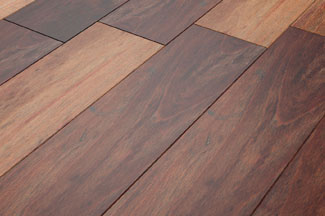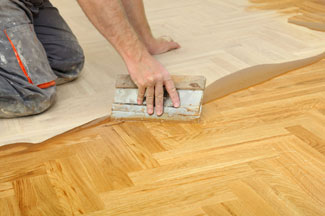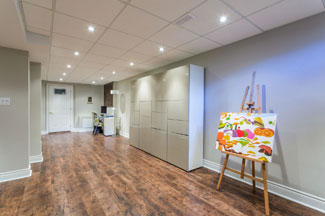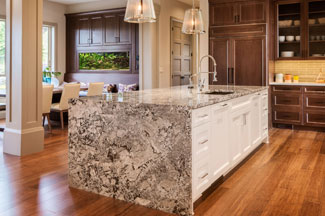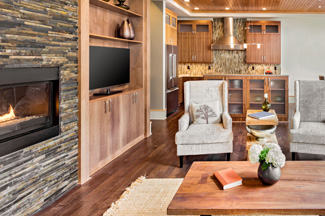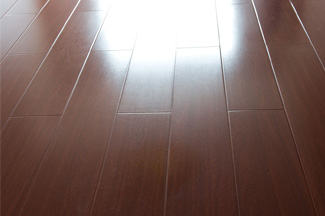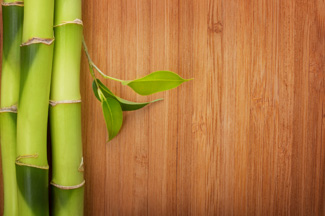Hardwood Styles
SHOP SMARTER AND COMPARE HARDWOOD WITH CONFIDENCE.
Understanding the types, species, and finishes of hardwood products can provide you with valuable information. There is a wide array of hardwood styles on the market today that allow you to create a hardwood floor that matches both your lifestyle and your desire for beauty, durability, and practicality.
CHOOSE BETWEEN PREFINISHED OR UNFINISHED HARDWOOD.
Today you can choose between a prefinished hardwood floor and one that is unfinished. Prefinished hardwood comes ready for installation in your home. The hardwood boards have already been sanded, stained, and finished at the manufacturing plant. In many cases, this can provide a harder, better-protected surface.
Prefinished floors offer a wider variety of wood species and save hours of labor and cleanup. The days of having to wax and scrub your hardwood floors are pretty much gone forever. Manufactures of prefinished wood floors have developed sophisticated techniques to quickly apply hard, durable, urethane-based finishes right at the factory. By using ultra violet lights, the prefinished planks can have several coats of urethane applied within minutes. This is one of the reasons why many flooring retailers and builders are pushing prefinished hardwood floors. Instead of taking several days to install and finish a new hardwood floor, a prefinished hardwood floor is generally done in one day.
On the other hand, unfinished floors allow you to have a custom job. You choose the wood species and it is sanded and stained on site. With unfinished floors, you also can level the surface of the entire floor after it has been installed. You get an extended factory finish warranty with prefinished floors, but not with most job-site finishes.
LOCATION IS CONSIDERATION #1.
Knowing where you plan to install your new wood floor will be the starting place for your hardwood buying decision. There are limitations on where some wood floors can be installed. This is especially true for solid wood floors. Since solid hardwood floors are more susceptible to moisture, they are not generally recommended for basements or to be installed directly onto a concrete slab. An engineered hardwood would be a better choice.
KEEP COLOR AND FINISH IN MIND.
Within each species of hardwood, you will have the choice of color and finish. When selecting a color, choose one that either coordinates or contrasts with your cabinetry and furniture. Also keep in mind that darker wood tends to be more formal, while natural colors are more casual. In general, lower gloss levels are better suited for active rooms because they help minimize the appearance of dirt and scratches. A high gloss finish would be appropriate for a more formal decor.
DIFFERENT HARDWOOD FLOORS HAVE DIFFERENT EDGES.



Hardwood floors come in either a beveled edge, an eased edge, or a square edge. The beveled edge allows each board to be slightly beveled. These products have a very distinctive groove in them. Beveled edge planks lend themselves to an informal and country decor. Eased edges have edges that are just slightly beveled. These are used to help hide minor irregularities, such as uneven plank heights. The third option is a square edge. This is when the edges of all the boards meet squarely, creating a uniform, smooth surface that blends the floor together from board to board. The overall look of this floor gives a contemporary flair and a formal feeling to a room.
RATING THE HARDNESS OF WOOD.
Wood is measured against the Janka Hardness Test, which measures the force needed to embed a .444” steel ball in half of its diameter into a piece of wood. The higher the number, the harder the wood. Although this is one of the best methods to measure the ability of wood species to withstand indentations, it should be used as a general guide. The construction and finish also play an important role in the durability of a species of hardwood.
660
690
870
950
1000
1010
1225
1260
1290
1300
1320
1360
1375
1450
1620
1725
1820
1820
1860
1910
1925
2200
2345
2350
Species Guide
Red Oak: This is the most abundant growing species in the United States. The sapwood of Red Oak is white to light brown, while the heartwood has a pinkish-brown tone. It comes in four different grades: quartersawn, select, #1 common, and #2 common.
White Oak: This is similar to Red Oak but is slightly denser and has longer rays. The sapwood is light colored, and the heartwood is light to dark brown. White Oak comes in the same four grades as Red Oak.
Cherry: American Cherry grows primarily in the midwestern and eastern United States and is very hard and dense. The sapwood varies from a rich red to reddish-brown and will darken with age. The heartwood can be a creamy white.
Hickory/Pecan: This is the hardest, heaviest, and strongest American wood. The sapwood of hickory is white, while the heartwood is pale to reddish-brown.
Maple: Growing in the Pacific Northwest, maple tends to be light, but a very dense wood. Generally, there is no marked difference between the sapwood and the heartwood. Because of its density, maple is not intended for areas with high humidity.
Pine: This tends to be a soft wood that absorbs moisture very well and is recommended for areas of high humidity. The sapwood in pine is a light yellowish-white, while the heartwood tends to be yellowish-orange.
Reclaimed Pine: This has the same characteristics as pine, however, it is recycled from old buildings, usually barns.
Walnut: This grows primarily in the eastern United States. The sapwood tends to be white, while the heartwood ranges from a deep chocolate to purplish-black.
Mesquite: This grows primarily in the southern United States and is known to be a very hard and durable wood. The sapwood tends to be pale and the heartwood is a reddish-brown. Mesquite usually contains many knotholes.
WE ALSO WANT YOU TO KNOW ABOUT BAMBOO.
Bamboo flooring is easier on the earth, harder than some hardwoods, and resistant to flammability. Unlike hardwood, bamboo is not a product of trees. Instead, it is a fast-growing grass. Bamboo can grow from sprouts to harvesting in three to five years, thus an acre of bamboo can prove more flooring than an acre of trees. Bamboo can be an attractive alternative to hardwood because it is eco-friendly, is stable, and can be harder than other woods. Bamboo can be nailed down, glued down, or floated. It comes in planks and is installed just like engineered hardwood floors and can be installed over many types of subfloors.






